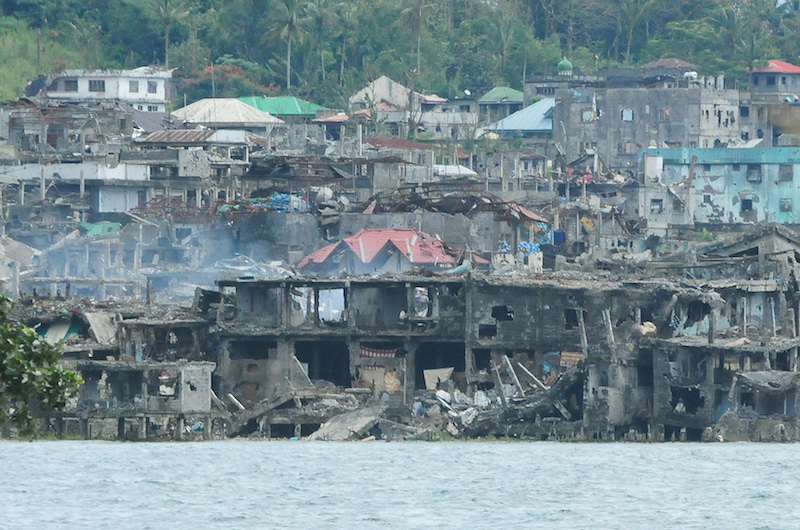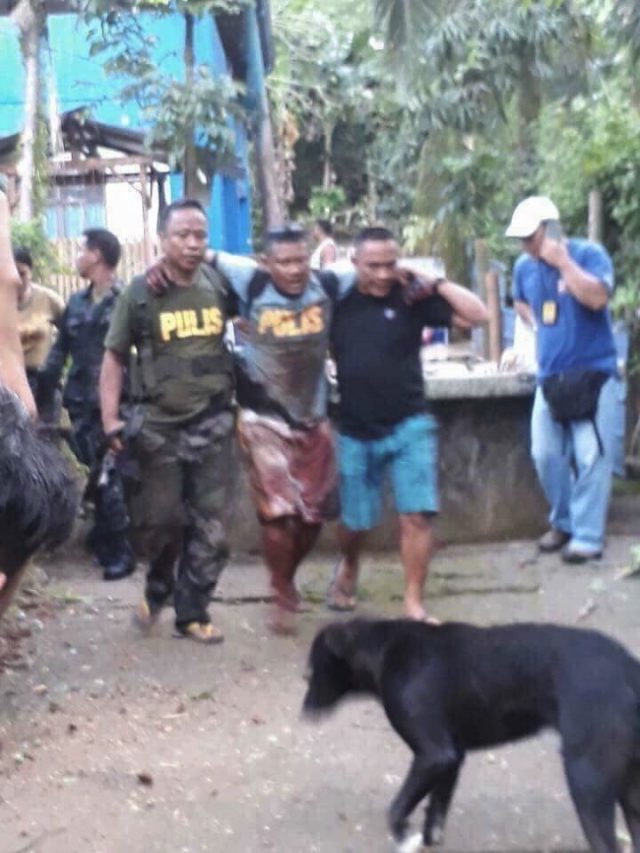Yesterday, Philippine Congress with a huge majority accepted president Duertes proposal to yet again prolong the Martial Law in Mindanao that is been in place since May this year. Contradicting the previous claims that this law would serve the “War against ISIS”, he now clearly stated his intention of enacting this law in order to combat the NPA, which has significant influence on the Island.
The move of the government to prolong the Martial Law in Mindanao scheduled to end this year comes of little surprise, considering the official ending of the peace negotiations made by the Philippine state on the 23rd of November and the subsequent declaration in the beginning of December, that the New People’s Army and the Communist Party of the Philippines from now on will be considered terrorist organisations. Simultaneously a campaign was launched to slander both organisations and to drain their funds.

Marawi after its "liberation"
However, it is not the CPP that is responsible for the total destruction of Marawi (the capital in one of the Provinces of Mindanao) by means of areal bombings nor the “58 activists [that] have been killed in Southern Mindanao, 70% of which are from Compostela Valley, a center of anti-mining resistance which is now dubbed as the ‘valley of death.‘” For those atrocities and the thousands of people that have fled the region since May, only the Philippine Government, unleashing terror against its own people, is to be blamed.
Examples for the atrocities committed by the state can be found plenty. However, a most recent massacre on poor peasants in Southern Mindanao 11 days ago serves well to illustrate the character of the reactionary army and the NPA. On December the 3rd, the 27th Infantry Battalion of the reactionary armed forces was ordered to assault the village Sitio Datal in the province of South Cotabato to quell the struggle of the T’boli-Manobo S’daf Claimants Organization (TAMASCO) to regain their ancestral lands. Without warning they opened fire on these peasants, who are a thorn in the governments plans for this region, leaving eight dead. Following the initial and unannounced attack, the peasants however were able to heroically throw back the attackers, killing three and wounding another three with simple rifles and makeshift weaponry. Meanwhile a detachment of NPA evacuated fleeing villagers and later engaged the murdering bunch on their retreat. Considering this, it is pretty obvious who the real terrorists are.

It is also noteworthy to mention, that - since the ending of the peace negotiations – the NPA has stepped up their number of actions, as even the New York Times has to admit. Hence, the reactions urgency to now prolong the Martial Law once more. In the first week of December alone, there has been a significant rise in armed actions by the NPA:
- Two soldiers were wounded in two separate ambushes by NPA Units on the reactionary Army’s 62nd Infantry Battalion on the 7th of December in southern Negros.
- On the 4th of December the NPA raided a police station in Binuangan, Misamis Oriental in the north of Mindanao. During the two hours lasting exchange of fire four cops were wounded and propaganda leaflets were handed to the masses, calling for the destruction of Del Monte’s (Yankee food company) plantations in the area.
- On the 3rd of December a convoy of cops got ambushed in Labo Town in Camarines Norte in the north of the island of Luzon. The NPA killed one officer and wounded seven.
- The same day the councillor of Baggao Town was shot while strolling through the garden of his house in the mentioned town in the province of Cagayan on the island of Luzon.
